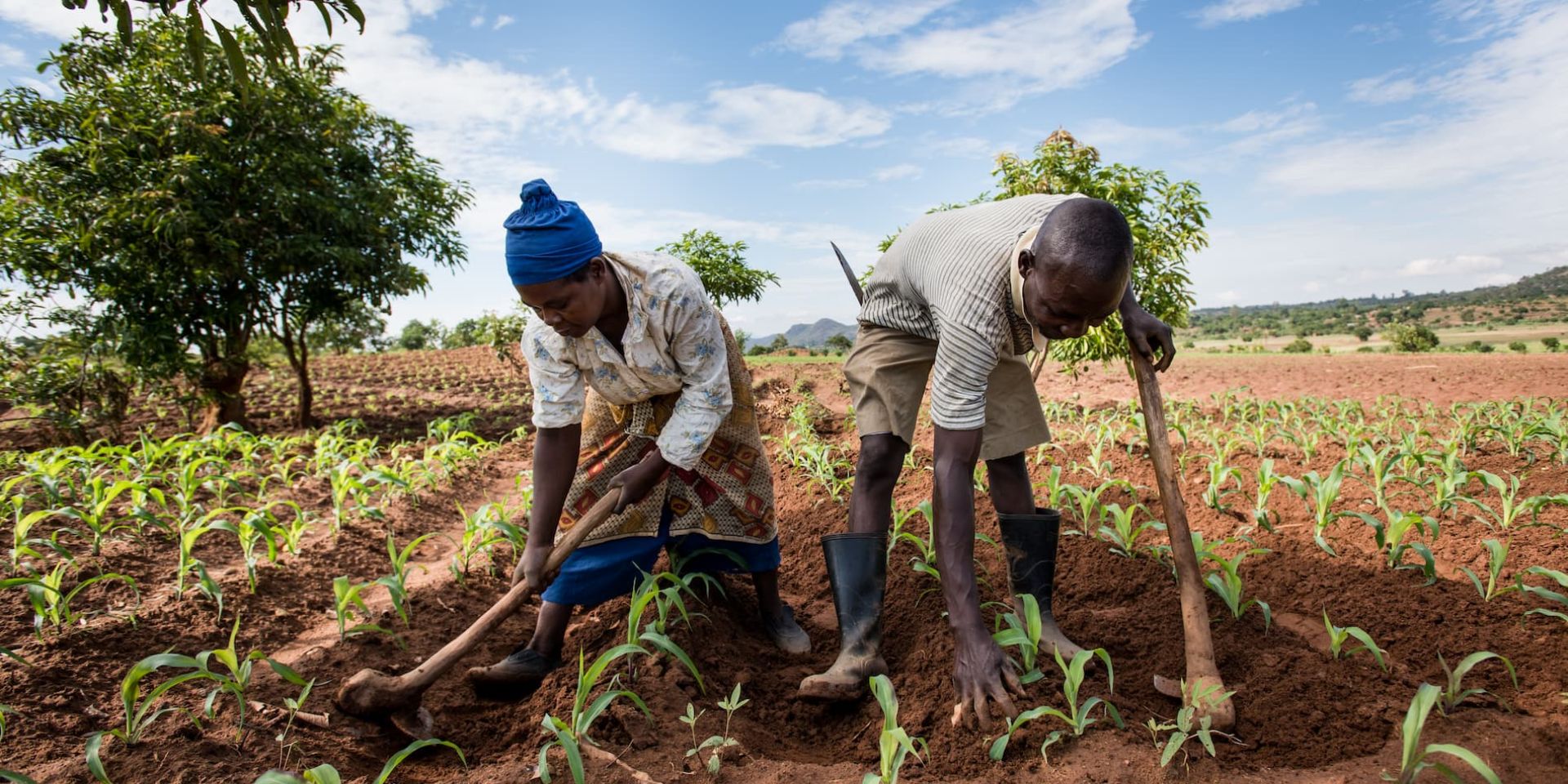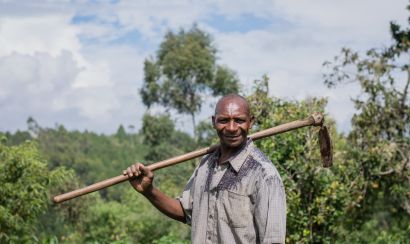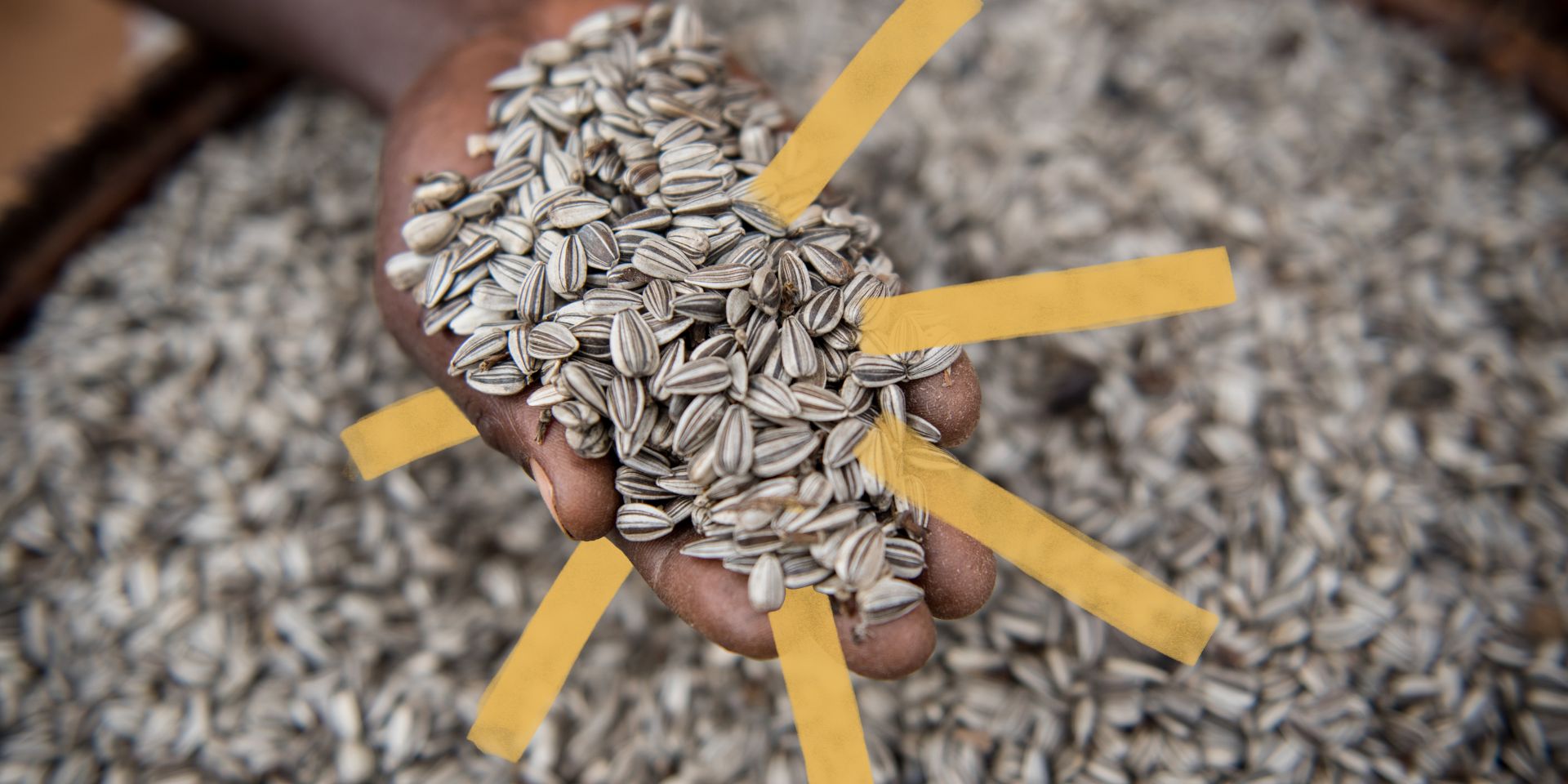Three Tips to Help your Farm Cope with Climate Change in East Africa
If you’re one of the 60% of Africans deriving an income from agriculture, unpredictable weather doesn’t just mean unpredictable yields, it may mean consequences on your finances, too. Over the years, at One Acre Fund, we’ve developed a series of trainings and advice, based on field trials and observations, to help our clients build resilience to climate change. We’d like to share our expertise with all farmers in the region, so they can cope better with weather changes.
Our advice follows the principles of Climate-Smart Agriculture (CSA), endorsed by the UN Food and Agriculture Organization. These are a set of methods designed to help farmers manage with unpredictable weather patterns while growing crops more sustainably.
While our recommendations are universal, they may vary depending on which agro-ecological zone your farm is in. For this reason, we’re sharing advice applicable in most of the countries where One Acre Fund operates including Kenya, Tanzania, Uganda, Tanzania and Malawi.
Intercrop with Beans
Maize is one of East Africa’s most popular crops but it is also taxing on the soil, and healthy soil is more resilient to weather shocks. Maize demands a constant supply of minerals, like nitrogen, as it grows. To keep soil healthy, and nutrient-rich, we recommend intercropping with legumes, like beans, which extract nitrogen from the air and fix it in the soil.
Legumes also need less water. Especially in unpredictable weather, intercropping them with maize is a great way to hedge your bets. You’ll have two crops to harvest on the same plot of land, which means more profit for your farm, and you’ll have a backup crop if the weather is too severe for either maize or beans.
When intercropping maize and beans:
- Dig holes 25 cm apart in each row of maize. Make sure each planting hole is at least 15 cm deep. You can use a pen or pencil to estimate depth.
- Measure out a distance of 75 cm, this should tell you where to plant the next row of maize. Midway between maize rows, dig out narrow and shallow troughs, around 10 cm deep, or the length of your index finger, for the beans.
- Sow the beans at least 10 cm apart, you can mark these out with a planting string knotted out for spacing.
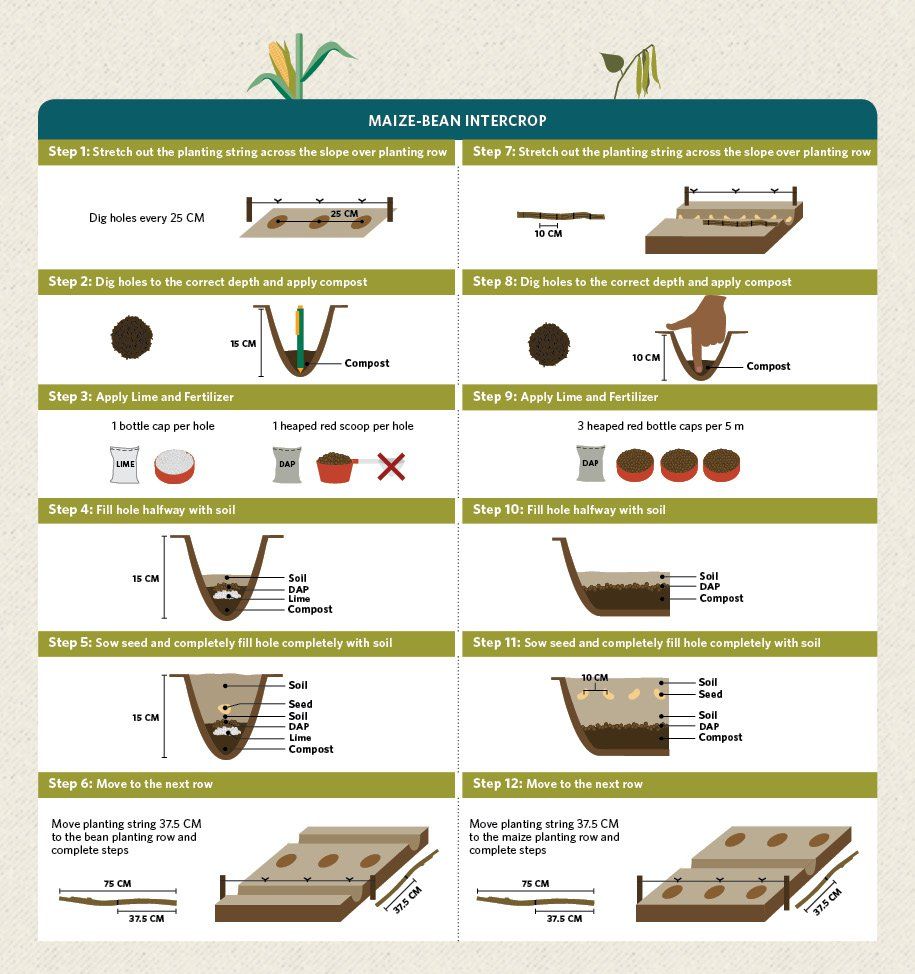
A guide to intercropping maize with beans.
Consider Composting
In order to keep your soil healthy despite climate shocks, you’ll need to supplement any minerals added to your soil through fertilizers with equal amounts of organic matter. Composting is a reliable and affordable way to do this.
You can make your own compost using animal and food waste from your farm. It is one of our most popular trainings on soil fertility management.
Follow these easy steps to make your own compost:
- Start with cutting dry maize stalks down to small chunks. Pile them to waist height in layers, mixing in green leaves or freshly cut grass in-between.
- We don’t recommend adding wood shavings to your compost heap.
- Add manure or chicken droppings at the edge of each layer.
- Then, cover with a thin layer of soil (around thumb-height in thickness).
- Pour a small amount of water to moisten the pile and turn the pile with a fork or similar farm implement. Be sure to keep an eye on the pile, checking in on its progress at least once a month.
- The compost is ready when all materials are completely decomposed.
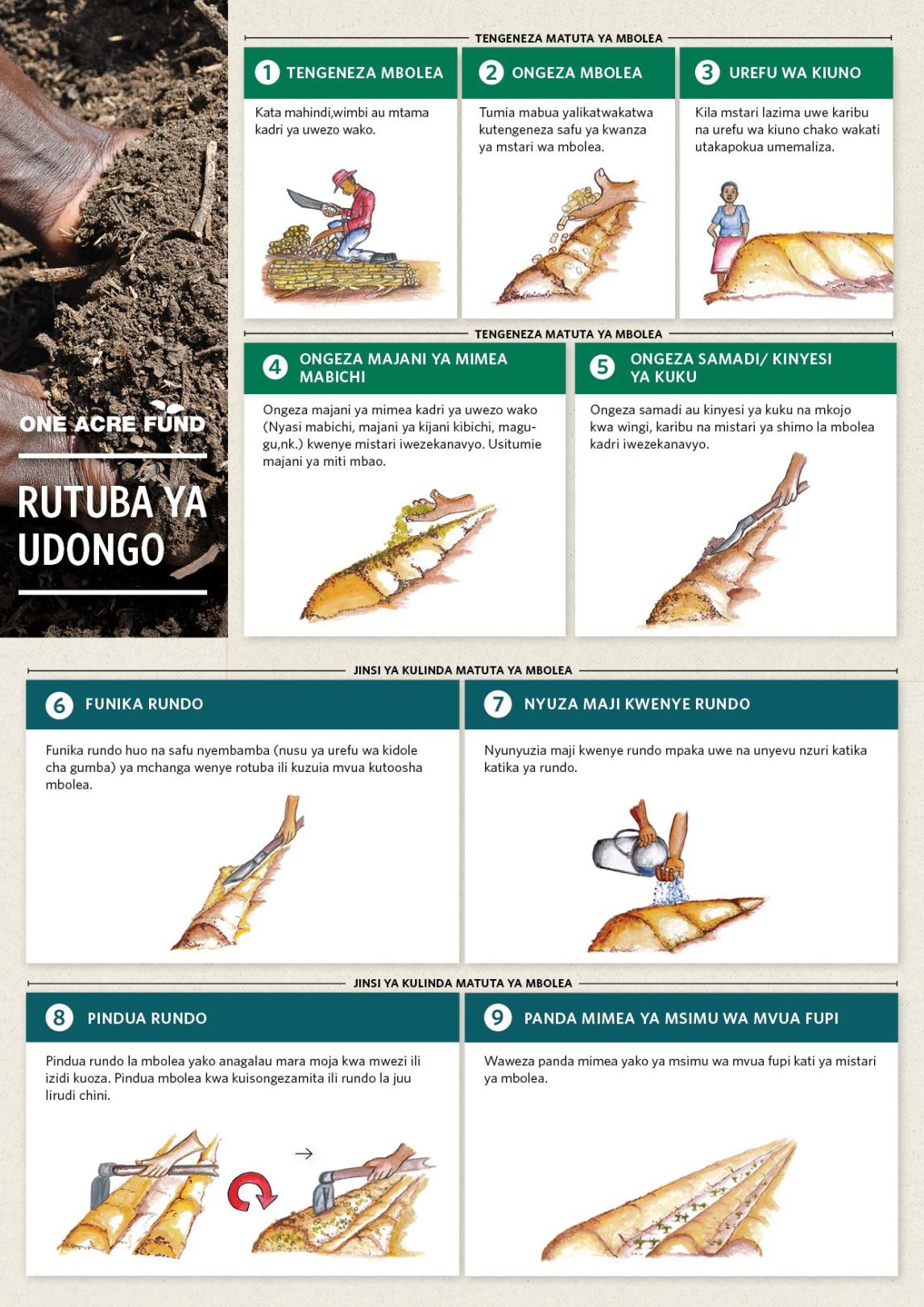
Control Erosion
Heavier and more frequent rains cause soil erosion. This washes loose soil away while stripping the earth that remains of important nutrients. Soil that loses nutrients grows less nutritious crops. Healthier soil is more capable of producing larger harvests, both now and in the future.
So, erosion has to be kept in check on your farm. Erosion control is a continuous activity. It should be a routine part of land prep ahead of planting.
To avoid soil loss in hilly areas, we advise digging trenches and planting trees. Trenches prevent running water from damaging your farm. Tree roots form net-like strands that keep soil compact, particularly in steep areas.
If your farm is on a slope and is experiencing erosion, we suggest planting a line of trees like Grevillea, Leuceanna, or Calliandra on the upper boundaries of your farm. Parallel to the trees, plant a line of grasses, like napier grass, before digging a trench. These act as a filter for water run-off which is crucial for controlling erosion. Make sure that you plant grass on both sides of the trench so as much water as possible is absorbed. Begin planting only after taking these precautions. If you have a large farm of an acre or more, repeat this process across various sections of your field.
Farmers facing extremely heavy rains may notice trenches forming in areas where there was major water run-off. If you’ve noticed this on your farm, you can slow the movement of water down by digging drainage trenches on the slopes on your land. The aim of these trenches is to direct excess water off of your land. However, make sure that you are not redirecting the run-off to your neighbours, it could lead to flooding on their plot!
A few other tips to consider to prevent erosion include:
- Always planting your crops in horizontal rows, against the slope, to slow water flow.
- Mixing organic matter, like compost, into your soil so it can absorb more water
If not addressed, erosion will get worse and, with heavier rains, could damage your crops or, in the long-term, affect the productivity of your land.
We hope you’ll give some of these methods a try. Even if you can’t control the weather, you can still make sure that your crops are less vulnerable to it. Adopting some of these Climate-Smart Agriculture practices will go a long way in defending the productivity and profitability of your farm.

